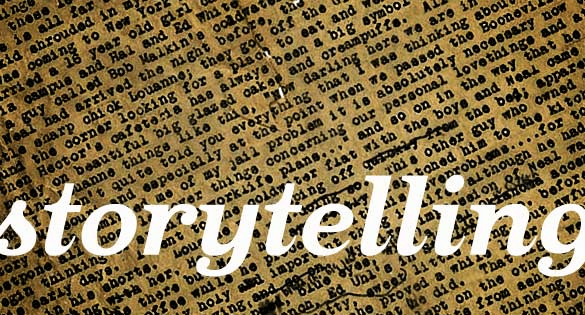
A version of this blog post appeared previously on the Forbes Agency Council blog.
As a consultant focused on uncovering, developing and sharing the great stories of our clients, I’m frequently reminded of my earliest lessons in the power of storytelling.
For me that goes back to the first storytellers in my life: my parents. Even after four decades in journalism, politics and public relations, I can clearly see lessons about storytelling that came directly from dear old mom and dad.
It’s probably similar for you — if not your parents, then someone, somewhere along the way, shared some powerful storytelling truths with you. It’s easy for leaders in our frenetic, always-on, information-saturated environment of 21st century business to forget that, like many things you learned from your parents or mentors, some lessons are eternal, including these storytelling guidelines:
1. Once upon a time: Frequently, when I speak to business groups about the power of sharing an organization’s authentic story in its marketing and communications, I ask the group to close their eyes as I share this phrase. Why? Because, cliched as they might be, these four words take us back to our earliest memories of the power of story.
For many of us, that began as small children, perhaps with a nighttime story before bedtime. Or maybe it was story time at a library or school, or with a favorite relative. Regardless, those memories are powerful reminders that storytelling is both biological and societal. Throughout human history, the power of story has endured. As science has demonstrated in recent years, our brains are hardwired for story. As human history demonstrates, the stories of societies — ancient and modern — are part of the thread that keeps us together.
It’s no different when you’re sharing the great story of your organization with those you want to buy from you, work for you, invest in you or partner with you. Your story touches on innate feelings shared by us all and brings to life all the reasons why your organization is deserving of engagement.
2. Tell the truth: Whether with your parents or another adult, who hasn’t been in a conversation where your honesty was questioned? Maybe it was about the lamp that broke, the empty cookie jar or why the garbage wasn’t emptied. The business corollary is easy to see today, as nearly every institution is questioned regarding its honesty — government, medicine, the media, etc.
The Edelman Trust Barometer, a highly respected annual survey of public faith in societal institutions, recently found that businesses are considered more believable than the media, government or other institutions. What does this mean for you as a business leader? It means you must be authentic, true to your understanding of a situation. The example I often give when speaking is this: If you and I are on different corners of an intersection and we witness a car accident, we both saw the same thing. But what we saw, from our different vantage points, is probably a bit different. Am I telling the truth and you’re a liar? No. Our experience of the same situation diverges quite literally because of where we stood. Our stories are both authentic.
In working with our clients, we frequently find that some get stuck on black and white interpretations of authenticity. We’ve learned that audiences don’t expect black and white interpretations of truth; that’s not the reality of their lives, which are filled with lots of nuance. What audiences want is an authentic story, one that’s rooted in truth and fully representative of the organization they are considering for a purchase, a job, an investment or a partnership.
This leads to an important discovery we’ve had: your authentic story, whatever your point of view, is best shared by your organization’s most fluent storyteller. That means, don’t always just zoom to the top of the org chart and put the CEO out there as the person best equipped to share your story. For example, consider a tech company that’s matured to the point where it needs professional business leadership. OK, now it has a pedigreed CEO. But is that the best person to share the story of the amazing invention the founder created? It’s probably better to have the CEO run the company and have the passionate founder share the story.
3. Be yourself: While it is true that I first wanted to be a classical musician (tuba, if you must know) and my mother didn’t fully accept my second career choice of journalism (she tried to get me to take accounting courses during my summer breaks from college), she still wanted me to be true to the person she had raised. And I have worked my entire life to achieve this important goal.
As a storytelling consultant, one of the greatest failures I see in branding comes when an organization falls in love with a tagline or a logo or some other marketing asset that might be creative or innovative or striking but is not at all reflective of the true nature of the organization. In other words, the worst marketing failures seem to happen when you forget to “be yourself” as an organization. This is why I counsel clients that their story should drive their brand, not the other way around. Branding is critically important. It’s just that if it doesn’t reflect the true nature and character of the organization, it won’t be as successful. And far too often, it’s an epic failure.
Are these the only storytelling truths? Hardly. Nor are they the only truths relevant to your organization’s success in sharing its great, untold story with everyone who needs to see, hear or experience it.
Nevertheless, for success in business, these storytelling truths my parents taught me are a great foundation to build on, regardless of what audience you most need to reach.
